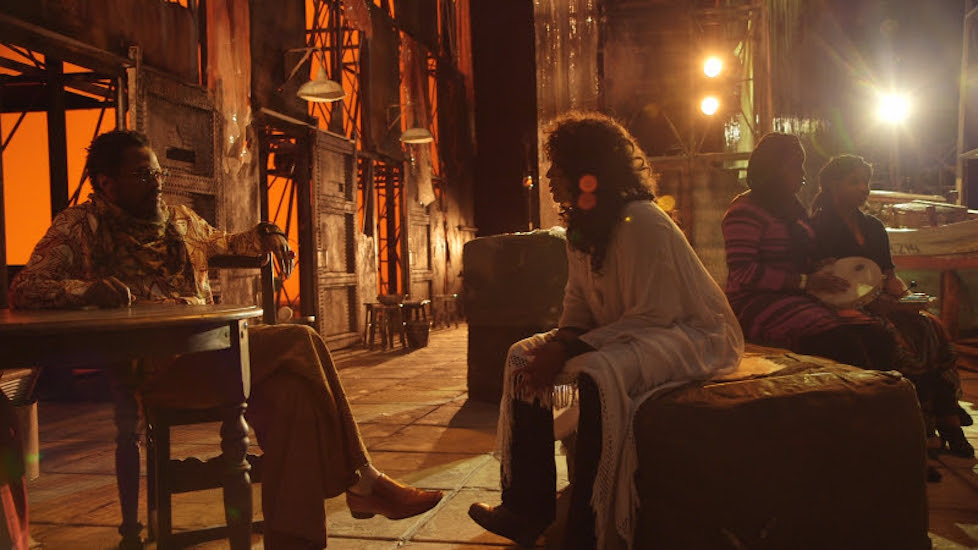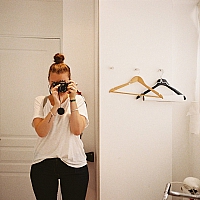
© Catherine Sullivan
Expositions du 11/9/2015 au 7/11/2015 Terminé
Galerie Catherine Bastide 62 Chaussee de Forest, Vorstsesteenweg B-1060 Brussels Belgique
Catherine Sullivan (born 1968) is an American artist living in Chicago whose work is based on a thorough understanding of the history of theater and cinema. Her work has been exhibited at Tate Modern, the Whitney Museum of American Art, the Walker Art Center in Minneapolis, Vienna’s Secession, the Kunsthalle Zürich, the Lyon Biennial and the Magasin in Grenoble.Sullivan’s works reference art history as well as noir movies, American vaudeville, and contemporary dance. In the same manner Pina Bausch linked theater and dance, Sullivan’s work bridges visual arts and theater, with a specific attention to gesture and style. The work content is eminently political, criticizing American imperialism and US history.Galerie Catherine Bastide 62 Chaussee de Forest, Vorstsesteenweg B-1060 Brussels Belgique
Catherine Sullivan is currently working on a new video piece consisting in a 20-minute installation that can also be presented as a single-channel 40-minute projection. This video, Afterword via Fantasia, has been shot on some already-existing sets for plays or operas such as Porgy & Bess or Waiting For Godot, performed by all African-American casts. This video exists in parallel to an experimental opera Sullivan is collaborating on with composer and music historian George Lewis (MacArthur “Genius Grant” recipient and Guggenheim Fellow) and composer and scenographer Sean Griffin. The opera is a commission from the MCA Chicago, where it will premiere in October 2015. The opera is based on the history of the Association for the Advancement of Creative Musicians (AACM), a non-profit organization founded by African-American musicians in 1965, at the height of the Civil Rights movement.It has played an important role in the social fabric of the local black community, most notably through musical education. Beyond this, AACM has played a seminal part in the history of American jazz and experimental music, with many musicians such as Anthony Braxton or Jack DeJohnette or the Art Ensemble of Chicago emanating from it. The libretto takes its source from Lewis’s book on AACM, and from the fundamental questions it raises about African-American artists rewriting themselves in the history of the avant-garde they had previously been excluded from.
In the video, Sullivan in turns follows closely the libretto to freely adapt it later on, while also creating her own texts, as well as her own gestural style and choreography. Some actual members from AACM act in the video, as well as artist William Pope L. Los Angeles-based artist Charles Gaines has created supergraphics for certain elements of the decor. In some scenes such as the one taking place on the Godot set, the actors recite Lewis writings about the contribution of AACM’s African-American members to the history of the avant-garde, alternating with much more abstract, Beckett-sounding texts. Elsewhere, some black and white scenes present exterior shots of locations where the AACM used to meet.In other places, the video concentrates more on sound work, as in the sequence unfolding on the Porgy and Bess set. As with most work by Sullivan, the narrative uses repetition of characters, movement, and in some cases texts. In this specific project the scenes rotation is conceived to create interest for viewer swatching the piece for various length of times. The existing sets used for the video were previously used for plays centered on the experience of African-American artists, in which the action is set in the same time frame as the opera, with the exception of Godot, for which the set was used by an all African-American cast and an African-American director. The final scenes in the video concentrate on the social, political and cultural realities AACM is currently confronted with, and on auniversal and positive aspect, the importance of artistic creativity.


